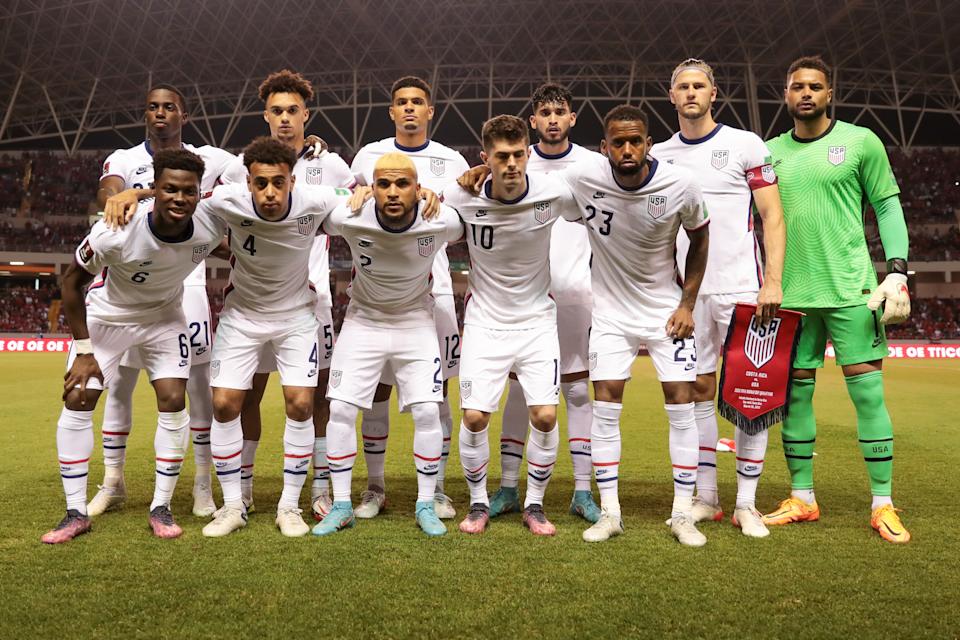The riddle when it came to offering equal pay — not just equal terms — to the U.S. Soccer men’s and women’s national teams was as obvious as it was challenging.
A bulk of the funding that eventually gets to the players comes from FIFA World Cup prize money and there has never been, and perhaps never will be, anything equal about that.
The men’s game is exponentially more popular globally than the women’s game. The television, merchandise and ticket revenue FIFA draws in from each is lopsided toward the men.
As such, FIFA is expected to award $440 million to the federations in the 2022 men’s event and $60 million to those in the 2023 women’s event.
U.S. Soccer can offer to cut the same sized slices of the pie, but it didn’t matter when the pies themselves bore no resemblance.
Until that was solved, the men — despite their historic lack of success — were always going to make more actual money — millions more — than the women, despite all of their victories.
Until you make the rest of the world — let alone Americans — care as much about Alex Morgan as it does Lionel Messi, there wasn’t much that could be done.
Except, U.S. Soccer president Cindy Parlow Cone did. After calling the “massive discrepancy in FIFA World Cup prize money … by far the most challenging issue,” she encouraged the men’s and women’s teams to work together to create historic change and then said U.S. Soccer wouldn’t agree to a new CBA until the issue was fixed.
From there, the men’s players admirably went along. And just like that, labor peace has been achieved.
The key: The prize money from the next four World Cups will be pooled and then divided equally to each men’s and women’s players. So too will all broadcast, partner and sponsorship revenue, plus ticket sales for U.S. Soccer controlled games. That’s another first.
Essentially, the men agreed to share funds with the women for the sake of progress.


They also will no longer passively profit off the global popularity of the sport and a men’s World Cup that draws in massive amounts of revenue whether they even participate, such as in 2018 when they failed to qualify for the men’s World Cup.
“They said equal pay for men and women was not possible, but that did not stop us and we went ahead and achieved it,” Walker Zimmerman, of the men’s player’s association, said in a statement. “We hope this will awaken others to the need for this type of change, and will inspire FIFA and others around the world to move in the same direction.”
So credit to everyone here. The USWNT for never giving up in its quest for equal pay. Parlow for demanding the men to respond to the challenge and the men for taking it on. The men’s players certainly didn’t need to do this. And while Zimmerman hoped this might ripple across the globe, don’t count on that, at least not quickly.
And this is a national team deal, not the main professional league revenue share. The idea of the NBA and WNBA (which is already subsidized by the NBA) pooling up money for player pay is different.
There were additional elements here. Better quality such as increased or improved staffing, venue and playing surfaces for the women, plus parental leave and other benefits. At the same time, compensation will be game-based. The women will no longer receive a salary, which carried them through the 2020 pandemic when the sport ground to a halt.
Overall, this was an act of goodwill and good gestures. For a process that was often uncomfortably contentious, complete with heated and overly simplified rhetoric, conflicting “facts” and numerous lawsuits, in the end it’s quite a model.
Gone, hopefully, are scenes such as the one following the USWNT World Cup victory in France where the celebration included chants of “equal pay.” Maybe now they can just enjoy the victory.
A big factor for the men, of course, is that unlike the women’s players they do not rely on national team money to earn a living.
USMNT star Christian Pulisic’s contract with Chelsea of the English Premier League averages about $10 million per year. Alex Morgan is reportedly making $450,000 to play for the San Diego Wave of the NWSL. The league minimum for the NWSL is just $35,000 (it will rise to over $125,000 for the MLS.)
As the USMNT roster has improved in quality — with more players competing for elite European clubs — money earned from playing for America is more of a bonus and less of a necessity.
Still, how often does any group willingly share money?
In the end, U.S. Soccer can move out from beneath this cloud and concentrate on continuing to grow the game domestically.
Meanwhile, America’s globally dominant women’s team will earn more for continuing to lift their sport everywhere, in part thanks to a fast-developing men’s team that has earned one more reason to be cheered.
